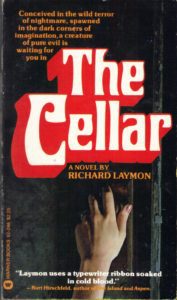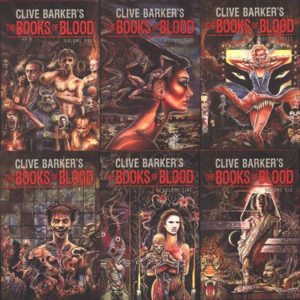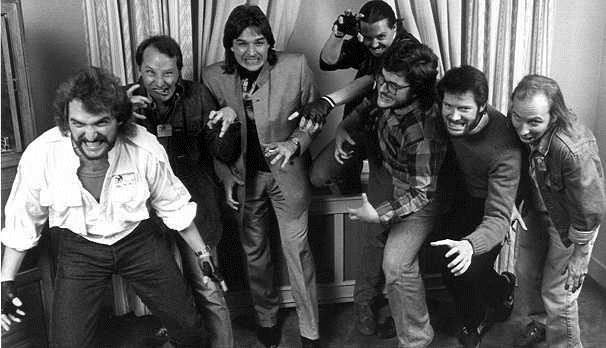No single sub-genre of fiction has spawned as much delight and controversy as splatterpunk. The mutated lovechild of clinical, horrific, and unflinching description with pulse-pounding, hair-raising stories populated by characters at the fringe of society, splatterpunk knows no limits or boundaries. It is horror fiction that rips through the barriers with its bare hands, pushing through the flesh, spewing bloody coils of intestines and arterial spray into the territory where realism and fiction blur with an ultra-violent intensity. Splatterpunk is also a statement, a movement, a punk rebellion against the squeaky-clean heroes and heroines of the previous generation, casting a blinding light on realistic characters horror readers could instantly relate to. Here we find the characters traditional horror left behind—the rocker, the burger-flipper, the junkie, the un-employed. Not cardboard cutout characters, but real people, with real problems, facing horrors human and beyond.
Not to be confused with Extreme Horror (though there is some overlap, naturally) splatterpunk concerns itself with a constant rebellion of the status quo. The emphasis is on the punk part of the word. Certainly, punk and metal music play a large part of the genre, with many titles actually focused directly on the music scene. There’s a certain attitude in the stories, and once you experience it, you can’t escape it. In fact, you’ll start to find it in works that aren’t necessarily known as splatterpunk. And while the gist of splatterpunk is a forceful movement away from the gothic and paranormal aesthetic of the horror fiction of the late 60’s and 70’s, without those seminal stories, the genre wouldn’t exist, and isn’t so snobbish to ignore the heritage that came before.
 Splatterpunk didn’t happen overnight, and there were multiple factors outside of horror fiction and publishing that started the infection. While not fully connected to horror fiction, many of these factors are part of the reason why so many people turn to horror fiction, to escape the terrifying times we live in. Much like the world we live in now, the 1980’s were fraught with political and socio-economic dangers that wove into our everyday lives whether we wanted it or not. The age of 24-hour news programming was just beginning to take hold, and would help drive our collective unconscious into a nihilistic void from which there is no escape. Every time we turned on the TV it was nothing but politics and war and serial killers and Satanic Panic and preachers molesting kids and teachers molesting kids and repression therapy. We turn to horror fiction and horror movies to get away from the real-world stuff being shoved down our throats. We crave the thrill with a safety net, and horror is how we get it. The real-world had invaded our lives 24/7/365 and those old horror stories of haunted houses and spectral invasions of demonic possession just weren’t doing the trick anymore. The readers weren’t reading it, and the writers weren’t twiddling their thumbs. Not that Stephen King, Peter Straub, and Ramsey Campbell weren’t kicking out the jams, but readers were starved for more. Not just more fiction, but fiction that cut deeper, that bled redder, that ground more bones to pulp than ever before, and there was a new crop of writers ready for the harvest just around the corner.
Splatterpunk didn’t happen overnight, and there were multiple factors outside of horror fiction and publishing that started the infection. While not fully connected to horror fiction, many of these factors are part of the reason why so many people turn to horror fiction, to escape the terrifying times we live in. Much like the world we live in now, the 1980’s were fraught with political and socio-economic dangers that wove into our everyday lives whether we wanted it or not. The age of 24-hour news programming was just beginning to take hold, and would help drive our collective unconscious into a nihilistic void from which there is no escape. Every time we turned on the TV it was nothing but politics and war and serial killers and Satanic Panic and preachers molesting kids and teachers molesting kids and repression therapy. We turn to horror fiction and horror movies to get away from the real-world stuff being shoved down our throats. We crave the thrill with a safety net, and horror is how we get it. The real-world had invaded our lives 24/7/365 and those old horror stories of haunted houses and spectral invasions of demonic possession just weren’t doing the trick anymore. The readers weren’t reading it, and the writers weren’t twiddling their thumbs. Not that Stephen King, Peter Straub, and Ramsey Campbell weren’t kicking out the jams, but readers were starved for more. Not just more fiction, but fiction that cut deeper, that bled redder, that ground more bones to pulp than ever before, and there was a new crop of writers ready for the harvest just around the corner.
And what a harvest it turned out to be. Throughout the ‘80s and early ‘90s, splatterpunk was more of a movement than a genre or subgenre, if only in that it launched what turned out to be some very storied careers and produced works that remain iconic classics of bloody, ballsy horror to this day. A whole new generation of legends were in the making with authors like Richard Laymon, Jack Ketchum, and Clive Barker coming out of the woodwork, more than ready and able, and they gave us buckets—and books—of blood to revel in. Three seminal works, in particular, made readers perk up and pay attention like meerkats in the presence of a predator. Laymon’s The Cellar, Ketchum’s Off Season, and Barker’s Books of Blood changed the face of terror forever, revivifying a genre that was in the process of foundering. And those books and creators were just the tip of the serrated blade, the harbingers of a much gorier and more glorious future that was, as it turned out, just around the corner.
 Authors like John Skipp and Craig Spector were waiting backstage with The Light at the End, and shortly after, The Scream, the book that brought the punk to splatter and began the process of refining the movement into a genre and further solidifying its close association with the heavier rock and roll and punk music that was coming to fruition right alongside it. Behind that, David Schow, the man who is credited with coining the term “splatterpunk” in the first place, helped to reinforce that tie to hardcore music with The Kill Riff. He followed that book up two years later with the iconic short story collection, Seeing Red, possibly the best collection of splatterpunk stories in the history of horror fiction and one that made Schow’s name, at the time, pretty much synonymous with the subgenre. Another name that would be remiss in omission is that of someone who pretty much completed the task of defining the subgenre with the novels and stories she wrote in the early to mid-nineties and those she’s continued to produce since then. Along with Skipp and Spector, Poppy Z. Brite was one of the most immediately accepted and embraced of the original “Splat Pack,” writing some of the most viscerally disturbing horror stories while simultaneously making hers a household name.
Authors like John Skipp and Craig Spector were waiting backstage with The Light at the End, and shortly after, The Scream, the book that brought the punk to splatter and began the process of refining the movement into a genre and further solidifying its close association with the heavier rock and roll and punk music that was coming to fruition right alongside it. Behind that, David Schow, the man who is credited with coining the term “splatterpunk” in the first place, helped to reinforce that tie to hardcore music with The Kill Riff. He followed that book up two years later with the iconic short story collection, Seeing Red, possibly the best collection of splatterpunk stories in the history of horror fiction and one that made Schow’s name, at the time, pretty much synonymous with the subgenre. Another name that would be remiss in omission is that of someone who pretty much completed the task of defining the subgenre with the novels and stories she wrote in the early to mid-nineties and those she’s continued to produce since then. Along with Skipp and Spector, Poppy Z. Brite was one of the most immediately accepted and embraced of the original “Splat Pack,” writing some of the most viscerally disturbing horror stories while simultaneously making hers a household name.
But was it a trend? Or was it a permanent fixture? It’s said by many that the subgenre saw its heyday from 1980 to around 1995, when it supposedly died a slow and quiet death, but it only takes a small amount of research to debunk that myth. Authors like Edward Lee, Wrath James White, and Ray Garton, to name just a few, have carried the banner well into the 21st century, not to mention the splatter-adjacent crew that includes greats like Joe Lansdale, Robert McCammon, and Brian Keene.
Over the next several months, we are going to dive deep into the buckets of blood to examine what makes splatterpunk tick. Covering the politics, the religious factors, the socio-economic conditions, and of course the music of the scene, we will shine a flashlight into the dark alleys where the genre began. Readers can expect some guest posts and mini interviews with some of the movers and shakers of the rebellion. Before we take a trip down memory lane, please join us next month as we flash forward to our coverage of the 2019 2nd Annual Splatterpunk Awards to discover the writers that are carrying on the splatterpunk tradition today.
BOB PASTORELLA and SHANE DOUGLAS KEENE










